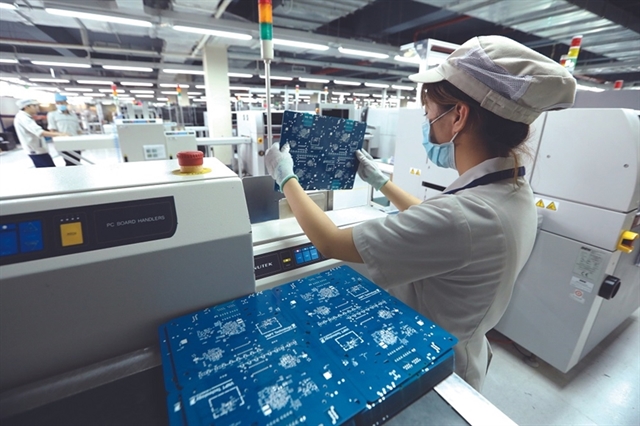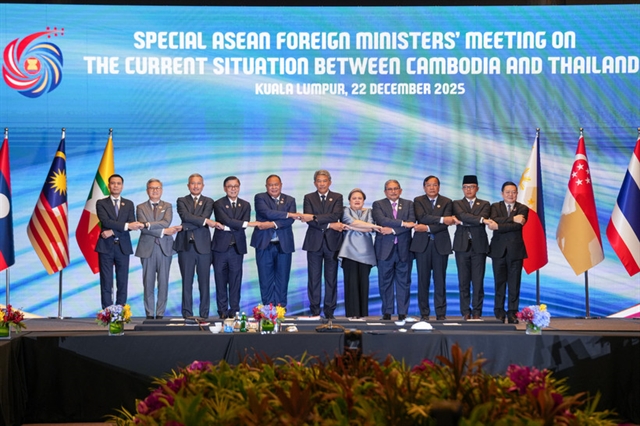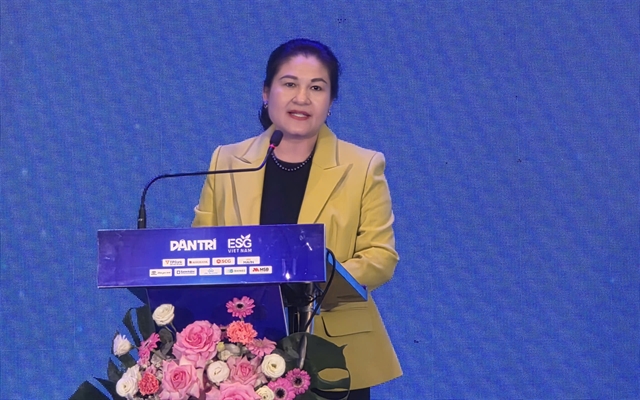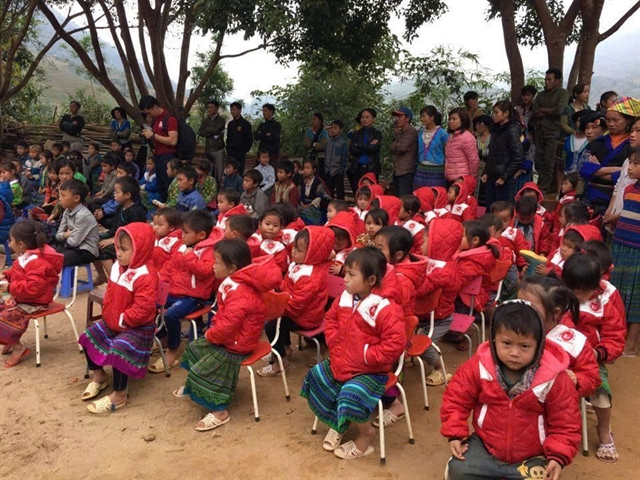 Features
Features
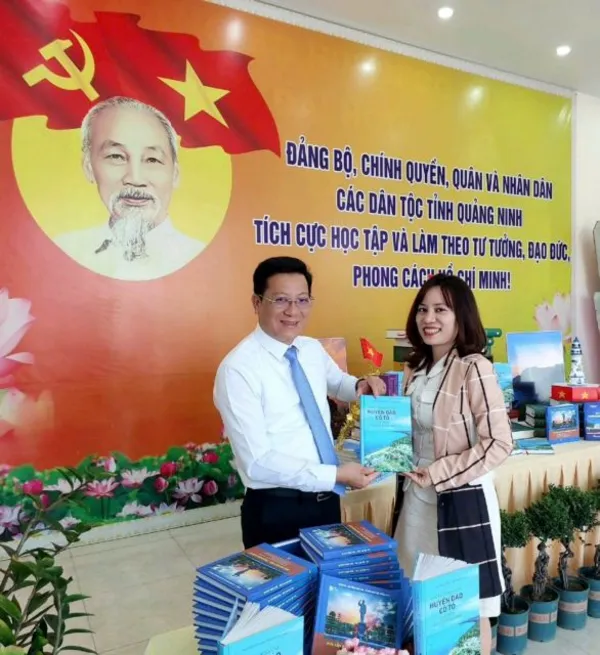
" />Under a Government plan for a Cross-Border Economic Zone in Long An Province, Kiến Tường Town has seen new factories, vocational training opportunities and commercial centres set up in the last few years. Additional foreign investment is expected to provide even more jobs for locals. Bồ Xuân Hiệp reports.
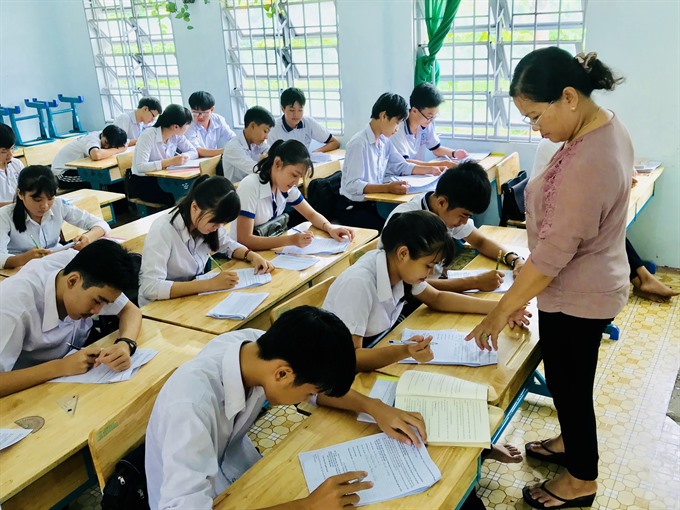 |
| Bright future: Lê Quý Đôn High School in Bình Hiệp District was certified by the Ministry of Education and Training as a school that meets New Rural Area criteria in Kiến Tường Town. VNS Photo Bồ Xuân Hiệp |
Under a Government plan for a Cross-Border Economic Zone in Long An Province, Kiến Tường Town has seen new factories, vocational training opportunities and commercial centres set up in the last few years. Additional foreign investment is expected to provide even more jobs for locals. Bồ Xuân Hiệp reports.
LONG AN — On a recent rainy day, I met Thái Kim Phượng, a trainee worker at the Tainan Enterprises factory near the border with Cambodia.
I was surprised to see that a factory employing 2,000 workers was surrounded by vast rice fields in Kiến Tường Town, located in the southwestern province of Long An.
Besides Phượng, hundreds of workers are now taking a training course provided by the US$65-million factory, which is located on 17ha and has created jobs for 2,000 locals.
Phượng, 20, told me that she had been jobless for a long time since there had been very few companies operating before the Taiwanese company opened in May last year.
The company’s finance manager, Warren Tsai, said: “We were the first foreign enterprise to invest in the town because we saw great potential, including low land prices and affordable labour costs.”
“We’re working on the first phase with around 1,800 workers, and in the future, we’ll need about 10,000 workers when the factory is completed,” he added.
“We’ve worked with the Đồng Tháp Mười Vocational Training School to provide on-the-job training. Most of the workers are locals with few or no skills, so that’s why we provide them with professional training first.”
Phượng, the trainee worker, said that she was happy that she could now have a job and live on her own.
“I will not have to move to a big city like HCM City to look for a job,” she told me.
When the Government approved a master plan for the Long An Cross-Border Economic Zone in 2015, locals like Phượng began to have a better life as foreign investors began setting up business.
Another foreign direct investment project, Việt Nam Victory International Co Ltd, covers an area of 4.3ha with total investment of $10 million.
The project, which received an investment certificate last year, is now in the middle of its site clearance phase.
 |
| Urban development: Kiến Tường Town plays a key role in Long An Province’s socio-economic development. VNA/VNS Photo An Hiếu |
Cross-border economic zone
Last year, the Long An Province People’s Committee approved a zoning plan to develop the first phase of the Bình Hiệp International Cross-Border Economic Zone (within the Long An Cross-Border Economic Zone), covering 168.5ha in Kiến Tường Town.
Phan Văn Dững, vice chairman of Kiến Tường People’s Committee, said in the past three years the town had focused on trade and services, as well as investment in the Bình Hiệp Economic Zone.
Town authorities have also worked with the province to upgrade infrastructure and set aside 100ha of land to use for investment projects.
Trương Văn Triều, chairman of the province’s Economic Zone Authority, said that local and foreign investors in recent years had shown interest in the zone.
The province is also looking forward to capital allocation from the Government for a transport system that will link the zone with HCM City and the southern key economic region.
All investment projects in the zone now enjoy lower corporate income taxes and personal income taxes, according to Triều.
“The management board will continue creating favourable conditions for enterprises to invest in the zone and to access medium-term loans at preferential interest rates,” he said.
Long An officials said that it would continue to create a healthy business environment to attract more investment and ensure border security as well.
Socio-economic changes
In recent years, Kiến Tường Town, located in the Đồng Tháp Mười (Plain of Reeds) region, has seen an increase in trade, industry and construction.
Today, poor households account for 4.9 per cent of the total of 11,700 households in the town, down from 6.36 per cent in 2015, while the area now has new roads, shopping malls and residential projects.
The town’s roads have a modern lighting system as well as wide pavements and greenery.
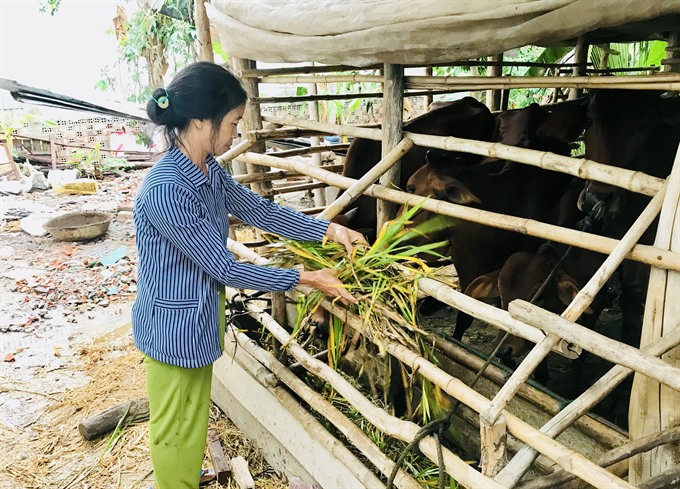 |
| On the rise: Nguyễn Thị Hiền, 52, from Kiến Tường Town, received a soft loan three years ago from Bình Hiệp District to buy 10 cows, which helped her family escape poverty. VNS Photo Bồ Xuân Hiệp |
Nguyễn Thị Hiền, in Bình Hiệp District, said before she received a low-interest loan to buy 10 cows three years ago, she did not have enough money to buy food for her family every day.
“We used to be very poor. I didn’t have a stable job and many people here wanted to leave for bigger cities to make a living,” she said. “Fortunately, I can now earn a living from raising my cows.”
Trần Thị Thu, who lives in Kiến Tường, said: “Since the town was founded in 2013, more commercial centres and beautiful roads have been built.”
“We also have more jobs because foreign companies have invested here,” she added.
Local residents have also contributed to urban development. Huỳnh Kỳ Tâm, 61, a former state official in Bình Hiệp, donated 1,500 square metres of his land to build a road in the district.
Hi-tech agriculture
Under the Government master plan for Long An, the province is also developing hi-tech agriculture, with rice as the main crop in border areas.
The province targets an output of more than 2 million tonnes of rice per year by 2020, which would account for more than 80 per cent of food production in the province.
The aim is to increase farmers’ incomes and have a highly competitive and environmentally friendly agricultural sector that is climate-adaptive.
Currently, a high-tech rice production area of 20,000ha is being developed in the border districts of Tân Hưng, Vĩnh Hưng, Mộc Hóa, Tân Thạnh and Thạnh Hóa and in Kiến Tường Town.
The province now has 54 hi-tech agricultural models that use organic fertiliser on 2,900ha in 26 communes in border areas.
Long An has also built a centre for high-quality seeds and livestock, and is conducting research on efficient aquaculture models.
In addition, the province is planning to work with rural districts and towns in the border areas to build new rural areas as well as expand industrial parks and clusters.
Meanwhile, Nguyễn Anh Dũng, director of Long An Department of Culture, Sports and Tourism, said the development of the cross-border economic zone should also include ecotourism.
The Plain of Reeds region, for example, is an attractive tourism destination that contains melaleuca forests, lotus ponds, reeds and grasses, and many species of fish, snakes, turtles and birds.
The Long An Cross-Border Economic Zone, established in 2015 and covering 13,080 hectares, has had a significant influence on the Mekong Delta province’s economy.
Located on National Road 62, the zone is one of the major trading areas in the Plain of Reeds region, which connects with the Trans-Asia transport system.
The province asked the Government to allocate funds to upgrade the road which was built in 1999.
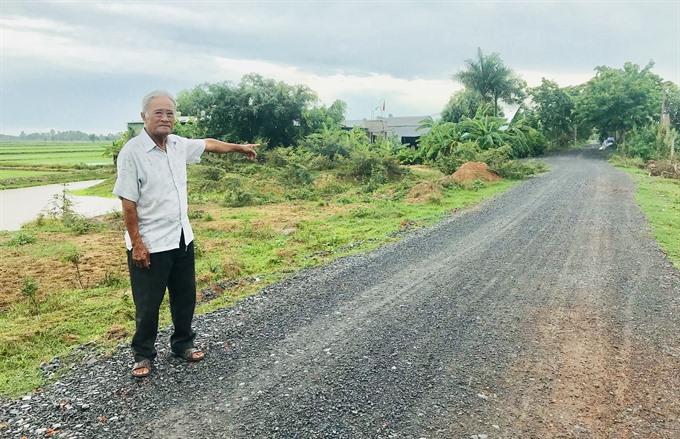 |
| Road to glory: Huỳnh Kỳ Tâm, 61, of Kiến Tường Town, points to the 1,500-sq.m land area that he donated to build a road. VNS Photo Bồ Xuân Hiệp |
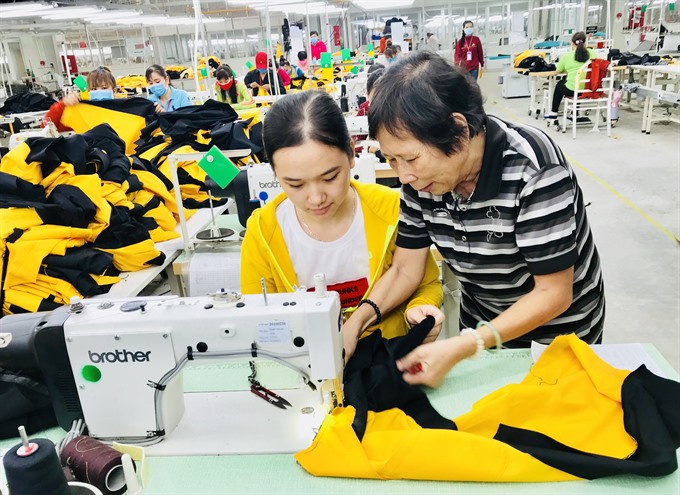 |
| Working together: An on-the-job training session for local workers offered by Tainan Enterprises Co Ltd, in cooperation with the Đồng Tháp Mười Vocational Training School. VNS Photo Bồ Xuân Hiệp |
Long An also needs funding from the Government for site clearance and compensation to local residents, and for construction of infrastructure in residential resettlement areas.
The resettlement areas are part of the province’s master plan to relocate residents who must move to make way for urban development projects.
The plan to develop cross-border economic zones until 2020 was approved in 2008 by the then-Prime Minister Nguyễn Tấn Dũng.
There are now 27 cross-border economic zones across the country.
The goal of the cross-border economic plan is not only to increase domestic and overseas investment, but also to build friendly, stable and sustainable relations between Việt Nam and Cambodia, Laos and China. — VNS

